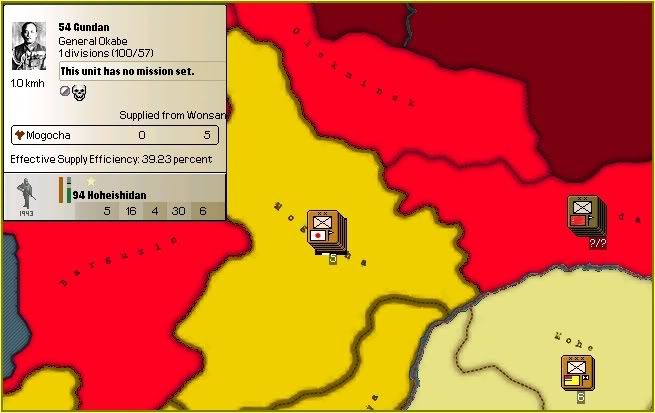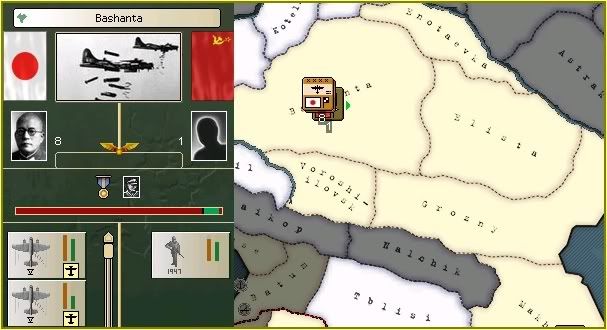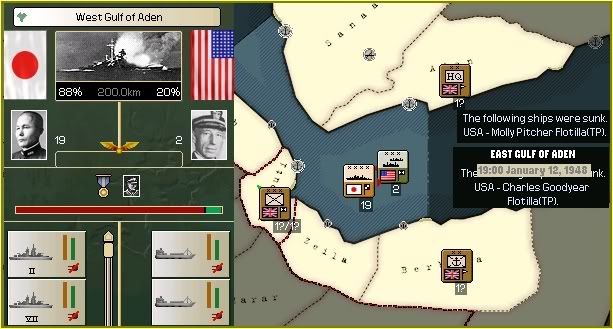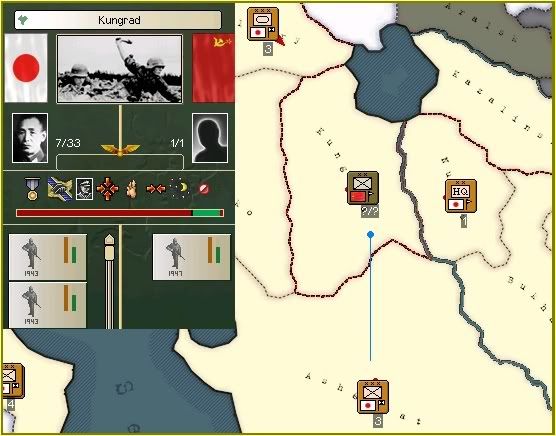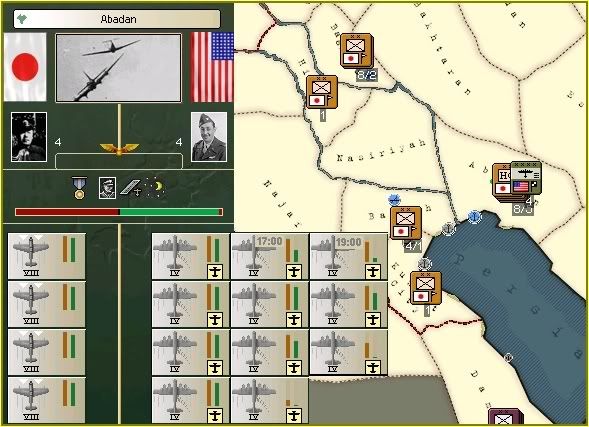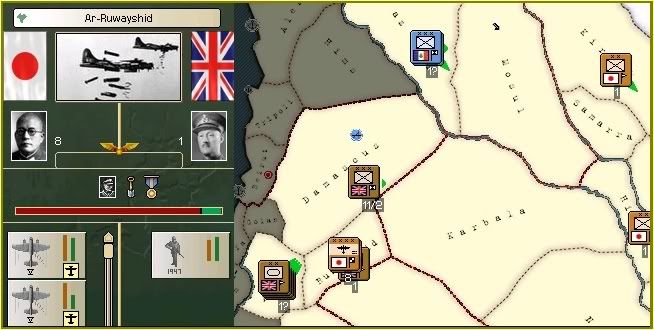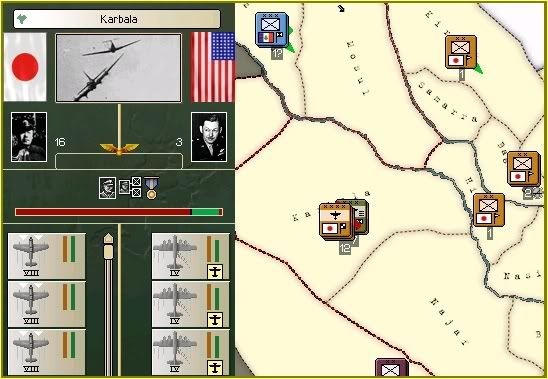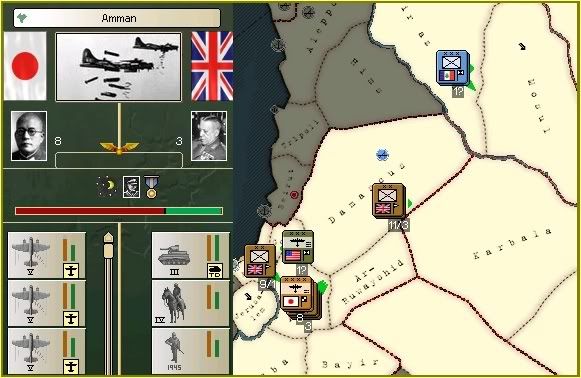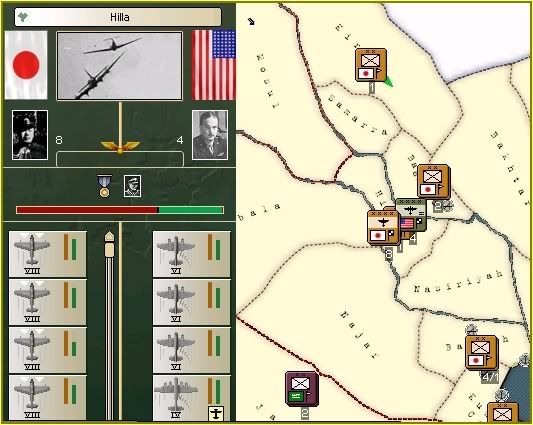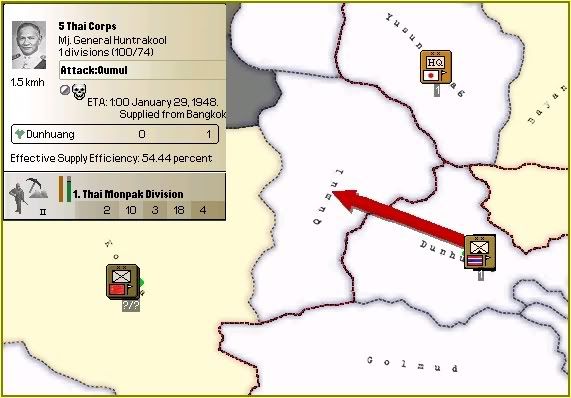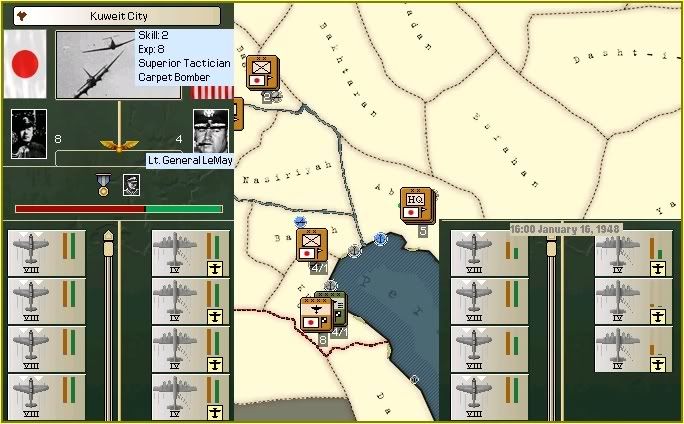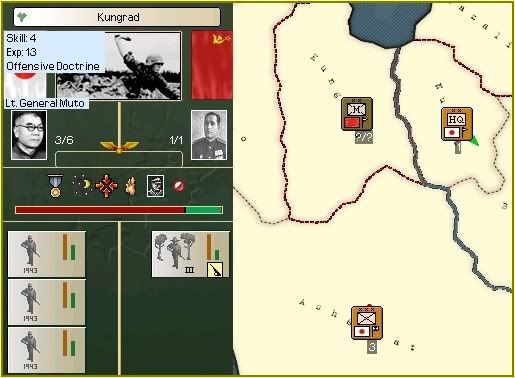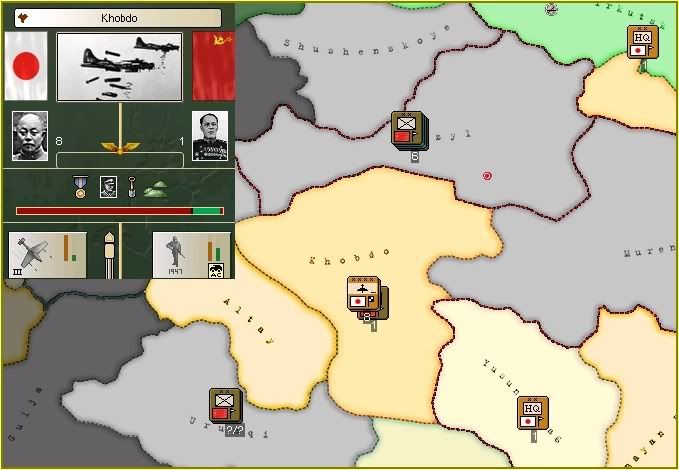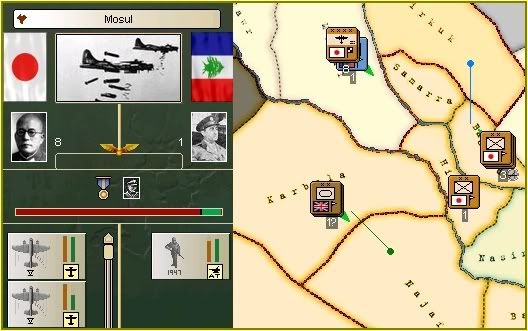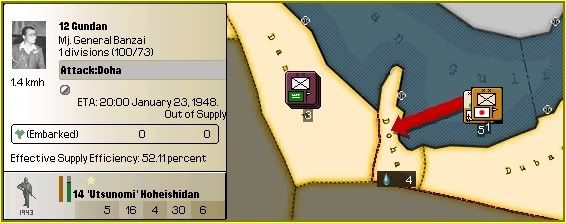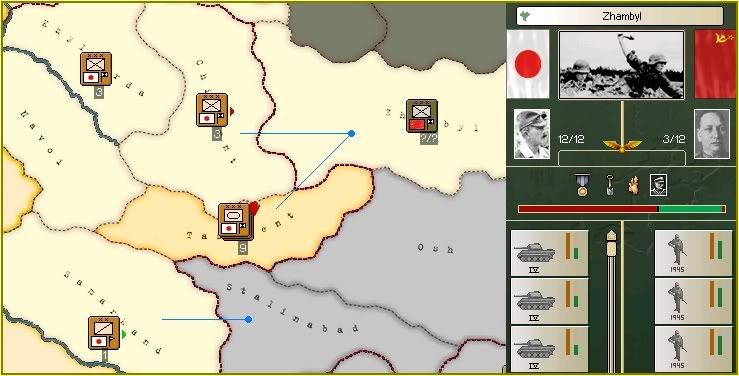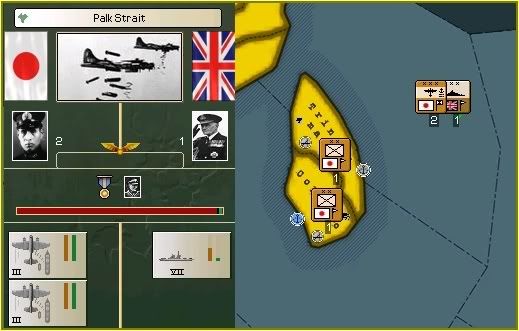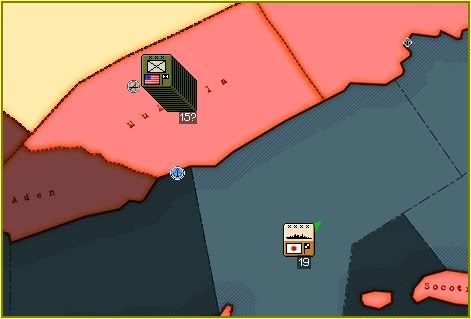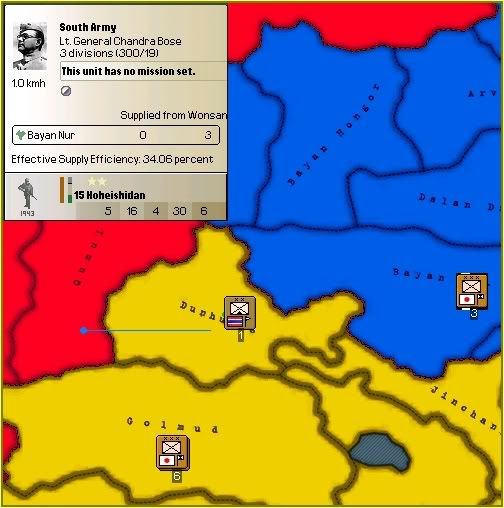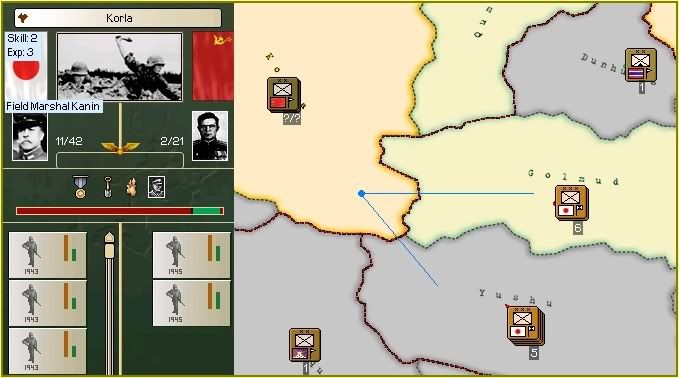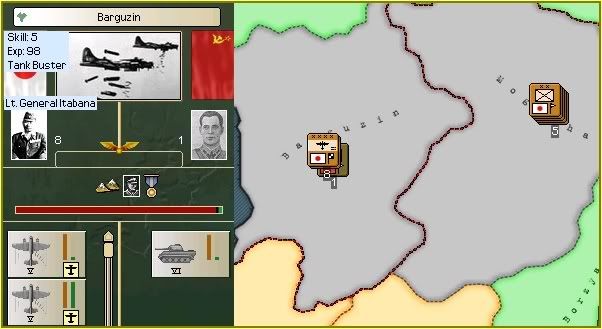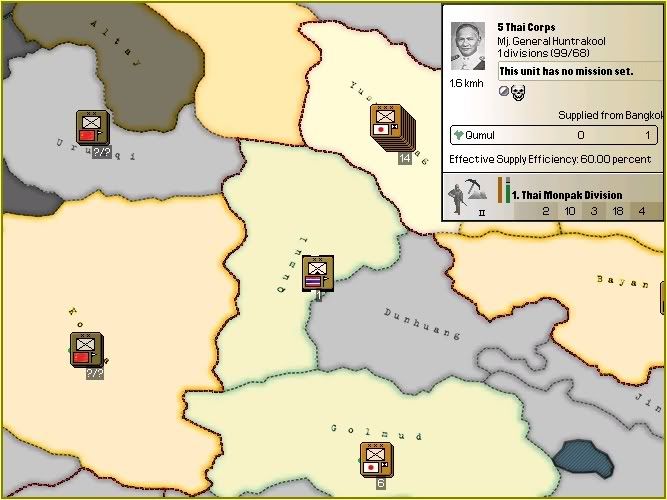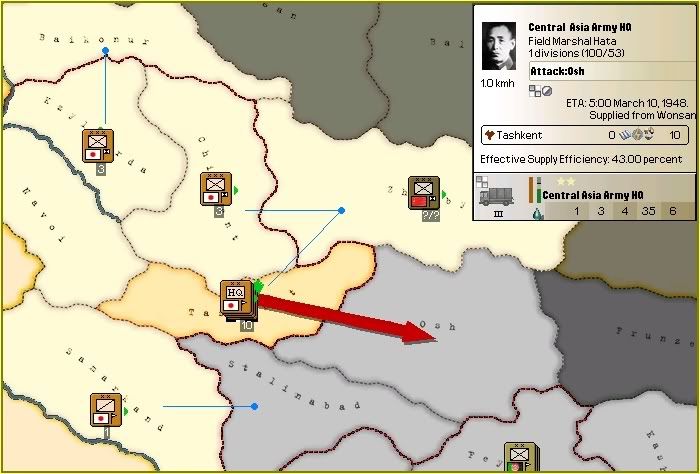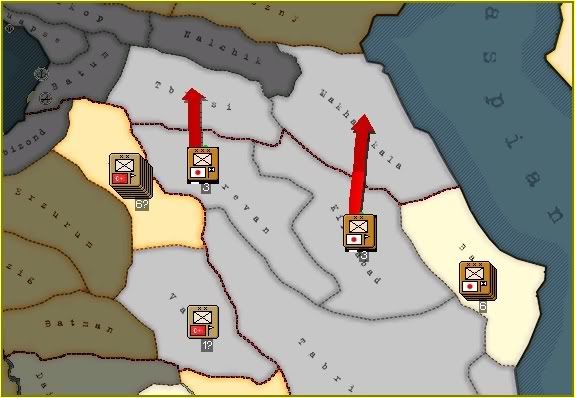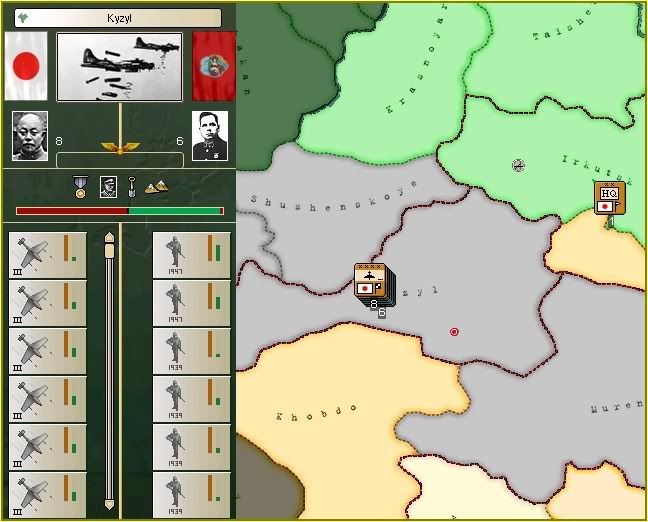1300 January 27th 1947.
East Asia Army Headquarters. Irkutsk, Soviet Union.
The complete lack of a counter attack by enemy troops to his south west would allow Terauchi to contemplate more advances.
His Headquarters had recovered enough to begin another march. Krasnoyarsk had a large Energy capacity which was vital to Japanese interests and was the logical province to move towards. There were more Energy reserves a little further west as well which would also be targetted.
There were still sporadic encounters with redeploying and freshly deployed Red Army troops in most areas. Lt. General Sumida's troops were already exhausted even though they had not even managed to march half way towards Barguzin to the east of Lake Baikal. The arrival of an Armoured division in their path could easily have halted the advance if it had not been for the support of General Okabe's troops in Mogasha to the east. Okabe would continue to shepherd Sumida's advance in the future to allow it to continue.
0000 January 29th 1948.
Intelligence Offices. Tokyo, Japan.
January continued to be a good month for Japanese research teams as another project came to a close.
Tokyo Arsenal had concluded its project which would allow upgrades to all of Japan's Infantry forces including Garrison divisions. This latest advance would also place Japanese Infantry on an equal footing with its better equipped enemies once the upgrades had been completed. The only drawback was the increase in Oil required to support these more modern divisions. Kuniaki ordered Mitsubishi Jukogyo to begin to researching Frontline Vehicle Repair which would increase the speed of all repairs throughout Japan's Armed Forces.
News of the research quickly spread to the Industrial Offices of Ginjiro who gave the necessary orders to begin the raising of Garrision divisions and their Police attachments as had been discussed at the Annual Cabinet meeting.
0100 January 29th 1948.
East Asia Army Headquarters. Irkutsk, Soviet Union.
The Close Air Support bombers based in Irkutsk did not possess enough range to attack east of Lake Baikal which meant that Hata had to request the use of a Tactical bomber group.
Itabana's group was moved to Irkutsk to support operations and began to target the retreating Armoured division in Barguzin. This province was deemed a critical strategic defensive position and had to be captured to secure East Asia Armys' defences.
0300 January 29th 1948.
North China Army Headquarters. Lanzhou, China.
The recent attacks by Higashikuni had done their job as Huntrakool arrived in Qumul with only a minor counter attack from Urumqi to bother him.
Huntrakool would need to wait for reinforcements to arrive before he could attack North China Armys' primary objective of Urumqi. To his north a large number of such redeployments had already occured and a large Japanese force was assembling to strike westwards once it had recovered from the move.
0300 January 29th 1948.
Central Asia Army Headquarters. Tashkent, Soviet Union.
Hata had spent the last week moving his Headquarters south to Tashkent to support operations in this area. The defensive line was well ahead of schedule in the north but the snow and mountains in the south and east were slowing his progress.
With his forces moving forwards across the entire area he took on the task of capturing Osh as he was better positioned and faster than any other forces available to complete the job. He would have to advance without support until Itagaki arrived in Zhambyl but there were not thought to be enough enemy troops in the area to halt his progress. Unfortunately there would be no reconnaisance reports or Air support until North China Army captured Urumqi or he captured Semipalatinsk.
The slow going in the Kaukasus mountains continued but his troops had made some advances. Yamashita had taken over the move towards Makhachkala as Honda's troops were too tired to continue. Okamura had captured Yerevan and had resumed his march north towards Tblisi after a short rest period. Hata would order troops from Baku to redeploy north once these advances had been completed.
0200 January 30th 1948.
The Skies Above Kyzyl.
Nakajima had been given no option but to bomb the defenders of Kyzyl for several days and the results of the constant attacks against the enemy troops organisation were pleasing.
Only two of the six divisions were capable of any sort of prolonged defence and the entire force was in absolutely no condition to hinder Terauchi's plans. Nakajima would continue to pound the defences until Japanese troops could arrive in sufficient numbers to launch an attack.
1600 January 30th 1948.
BB Division 1 Flagship. IJN Fuso, Ahmadabad.
Ozawa had moved back to Ahmadabad to conduct some minor repairs and to restock on food and supplies before continuing his patrol of the Arabian Sea. He opened a new report that had just arrived and quickly read it before turning towards the commander of IJN Fuso.
"Admiral Masami get BB Division 1 underway as soon as possible." Ozawa ordered.
"Yes Sir."
Ozawa headed towards the nearest plotting table to work out how long he would need to reach Gwatar Bay.
The latest report had come from Fukui as he patrolled the northern Arabian Sea. He had spotted an enemy Carrier Task Force in the Gulf of Halaniyat which was heading north east. Ozawa knew he could not reach Gwatar Bay before Edwards which meant a possible confrontation between the USS Phillipine Sea and CA Division 1 which continued to blockade the Persian Gulf and protect the Japanese invasions in that area.
Admiral Takasu was made aware of the approach of an enemy fleet which ensured a higher readiness for CA Division 1 should Edwards head his way. Ozawa hoped that Edwards would instead turn east and encounter BB Division 1 and its greater firepower. Other forces would also respond to the sighting as both Genda and Ichimaru altered their patrols from around Ceylon to the Arabian Sea.

